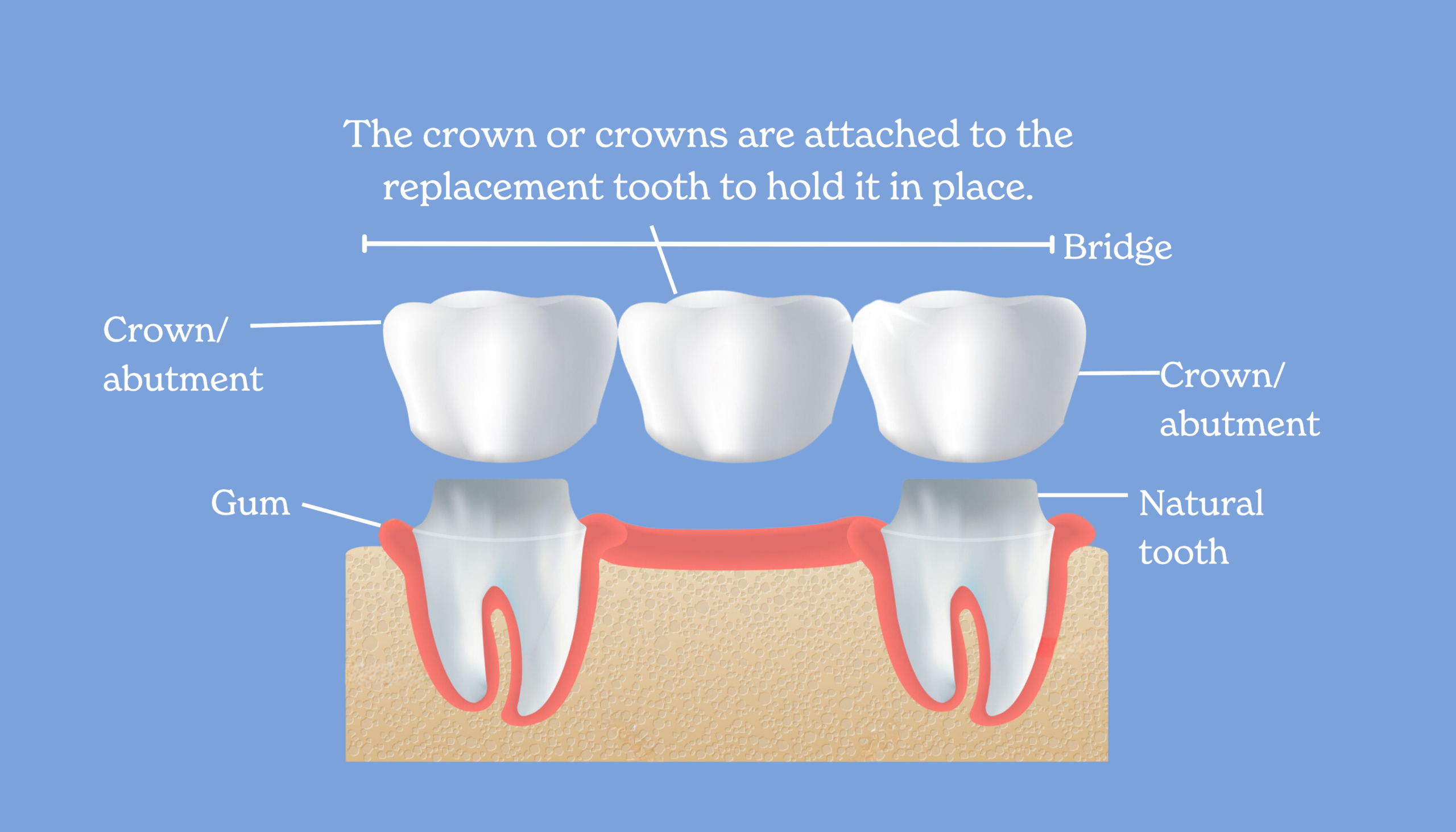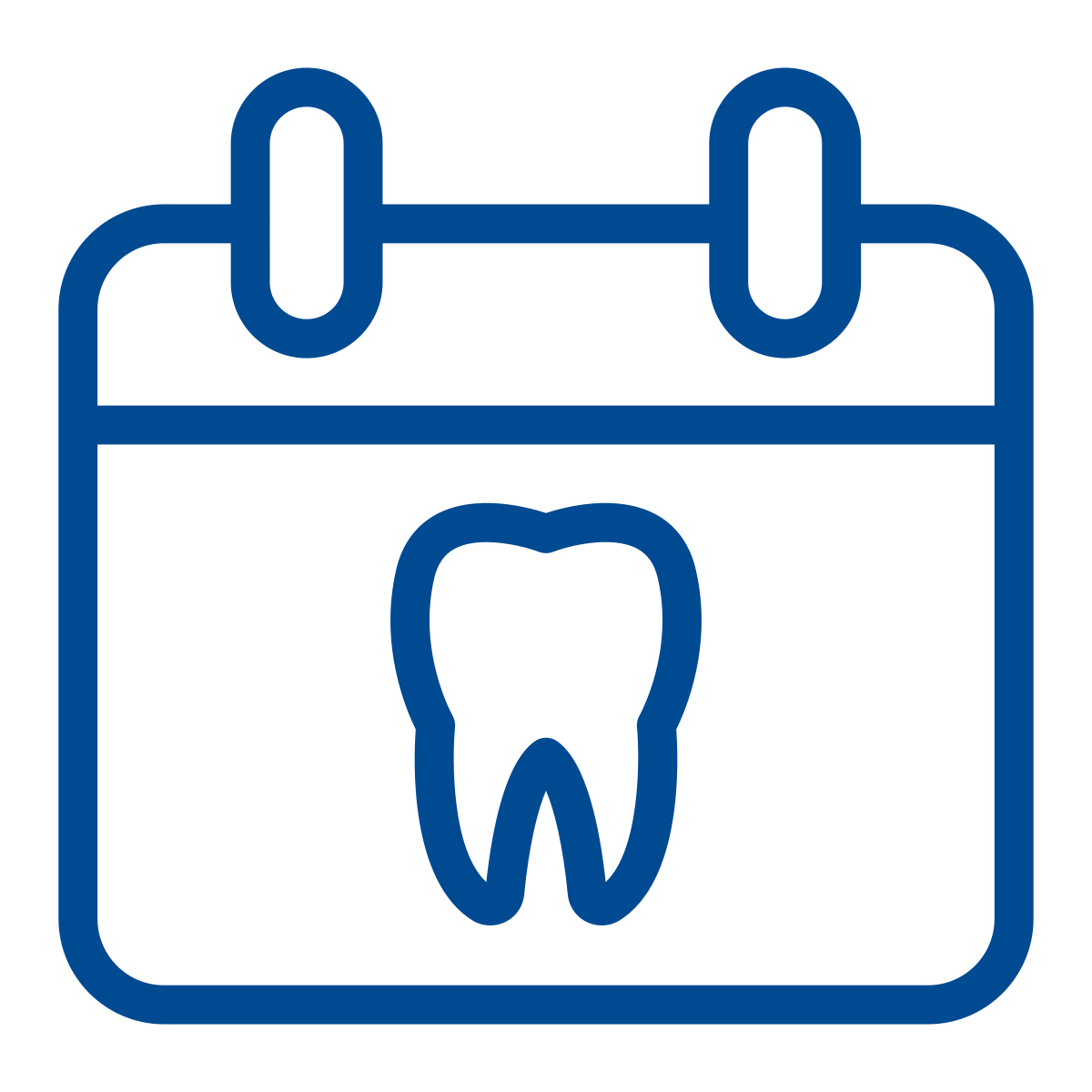Bridges
Dental bridges are used to restore smiles, improve chewing ability, maintain facial structure, and prevent teeth from shifting when gaps are left by missing teeth. Bridges are a fixed dental prosthesis that can be used to replace one or more missing teeth and are custom-made to blend with the colour, shape, and size of your natural teeth. A false tooth will be connected to the natural teeth on both or one side of the gap making it virtually indistinguishable from your natural teeth. Your dentist will evaluate your dental health to determine what type of bridge is most suitable for your teeth and desired outcome.
Book a general exam with your dentist today and discover what cosmetic treatments are available to you.

FAQS
With proper care and regular dental check-ups, dental bridges can last anywhere from 5 to 15 years or even longer.
Usually, a bridge replaces just one tooth, but can be used to replace multiple teeth depending on your oral health and where the gap is located. Your dentist will provide you with all available options to best suit your current oral health and desired outcome.
There are several types of dental bridges, including:
- Traditional bridges- held in place by dental crowns.
- Cantilever bridges- used when only one adjacent tooth is available.
- Maryland bridges- held in place by a metal or porcelain framework bonded to the backs of adjacent teeth.
Dental bridges are custom-made to blend in with the colour, shape, and size of your natural teeth, making them virtually indistinguishable from your natural teeth.
The process of having a dental bridge place typically involves two or more dental visits.
- During the first visit, the teeth adjacent to the gap are prepared by removing a small portion of enamel. An impression is taken to create a custom bridge. A temporary bridge may be placed during this time (generally paired with temporary crowns).
- On the next visit, the permanent bridge is fitted and adjusted before it is cemented into place.
Proper oral hygiene, including regular brushing, flossing, and dental check-ups is essential to maintain the longevity of your dental bridge. Special floss threaders or interdental brushes can help clean under the bridge.
Bridges are often a good option if the teeth on either side of the gap have big fillings in them already. They are also a good option if you prefer not to have a dental implant, or if your gums or jaw are not in the right condition to receive an implant.
However, not everyone with missing teeth is a candidate for a dental bridge. Your dentist will evaluate your oral health, tissues, and the condition of adjacent teeth to determine if a bridge is suitable for you.


